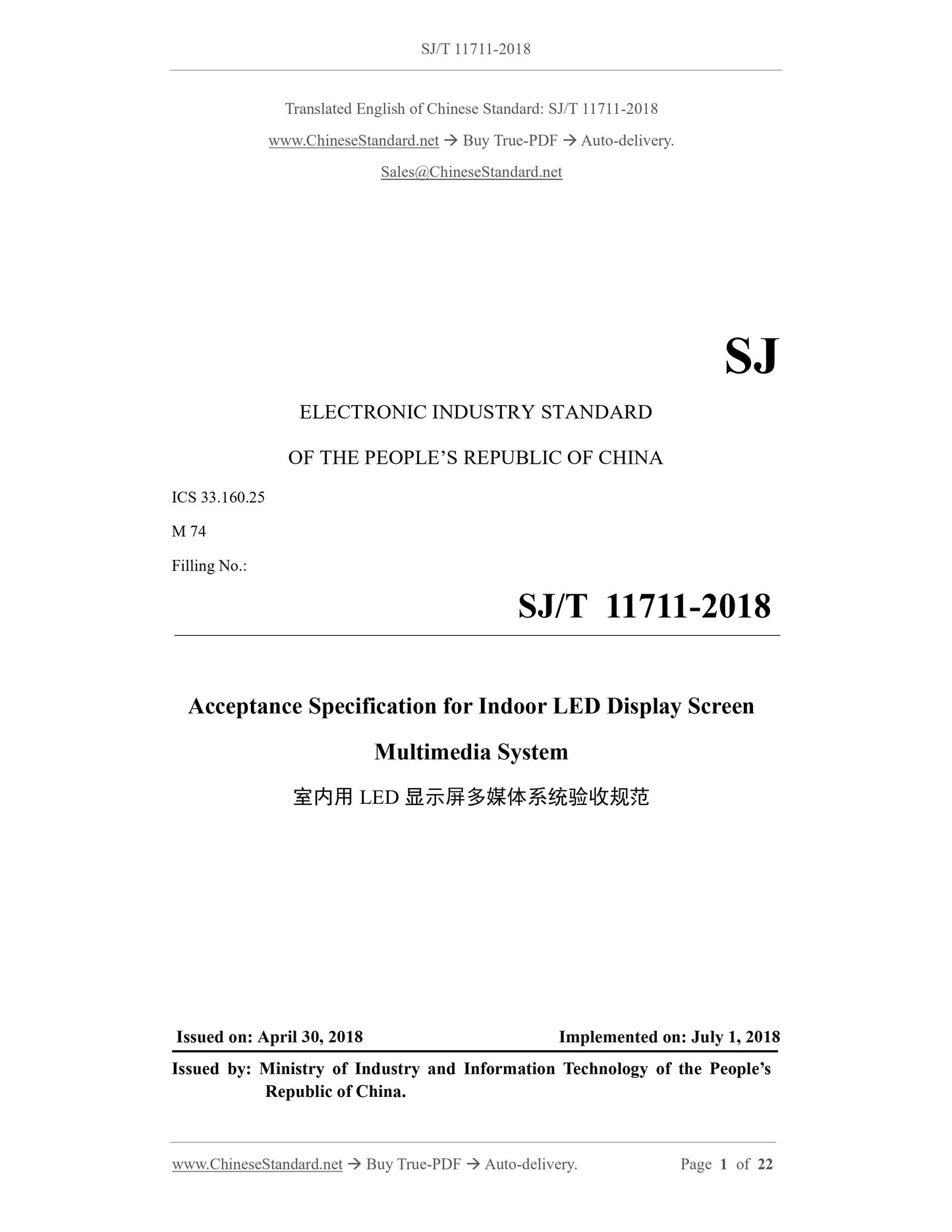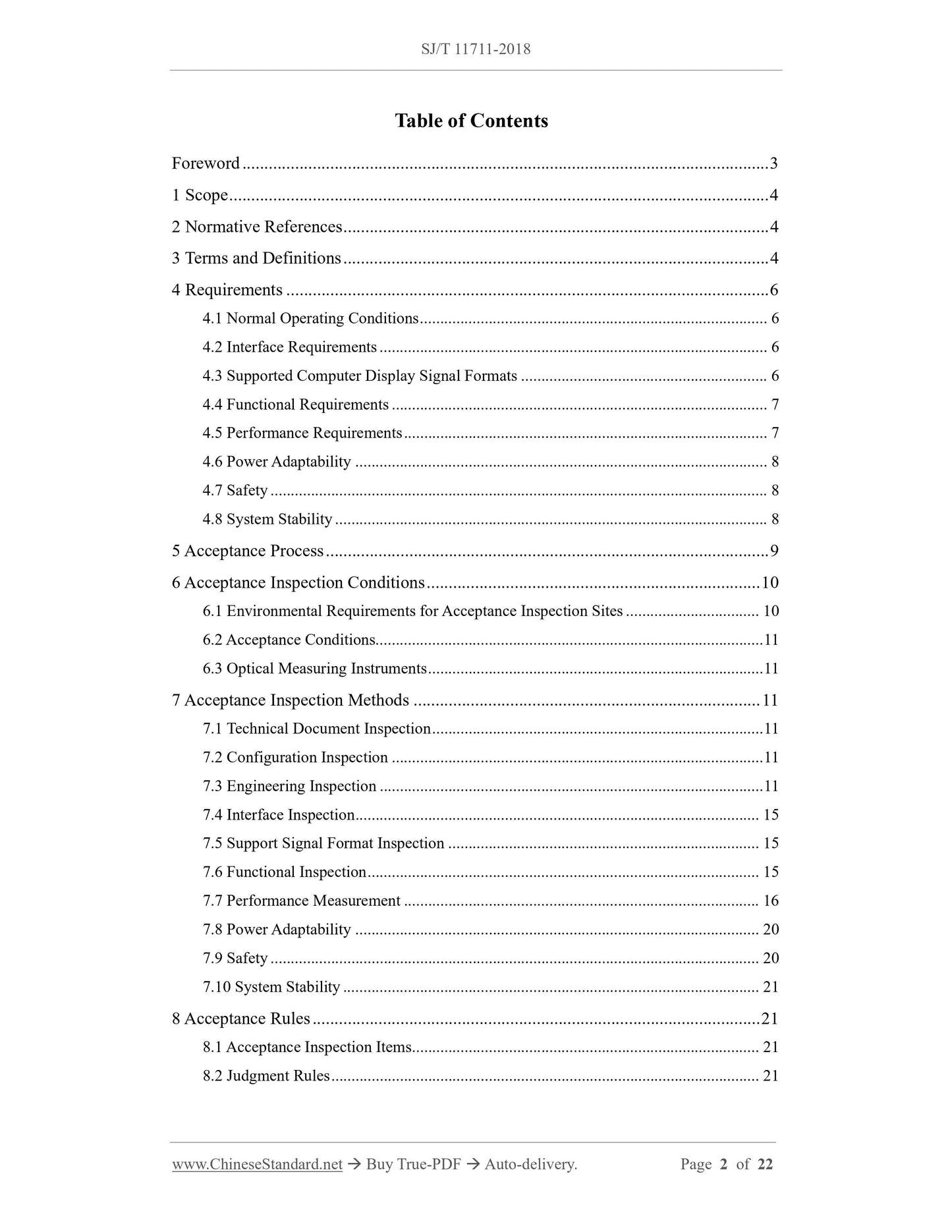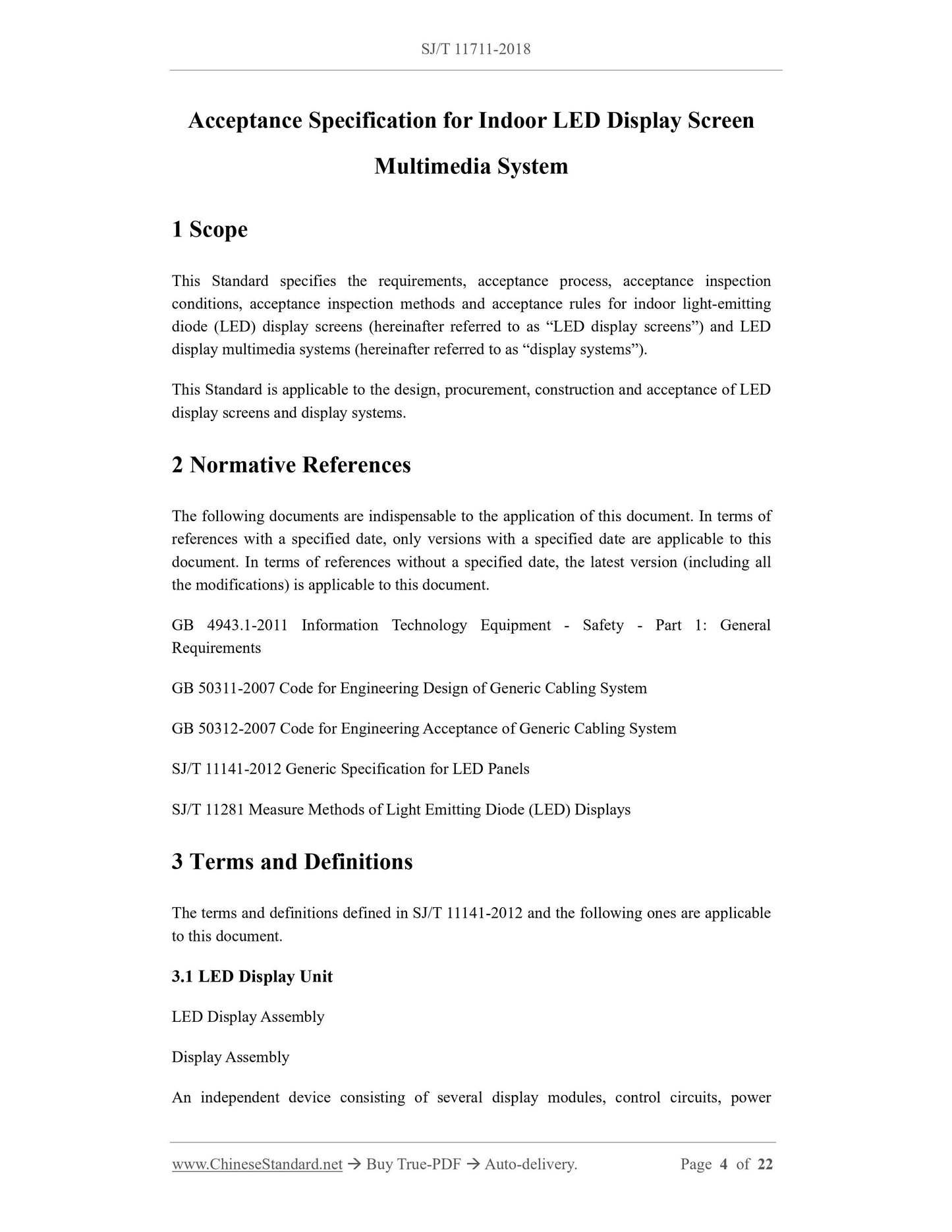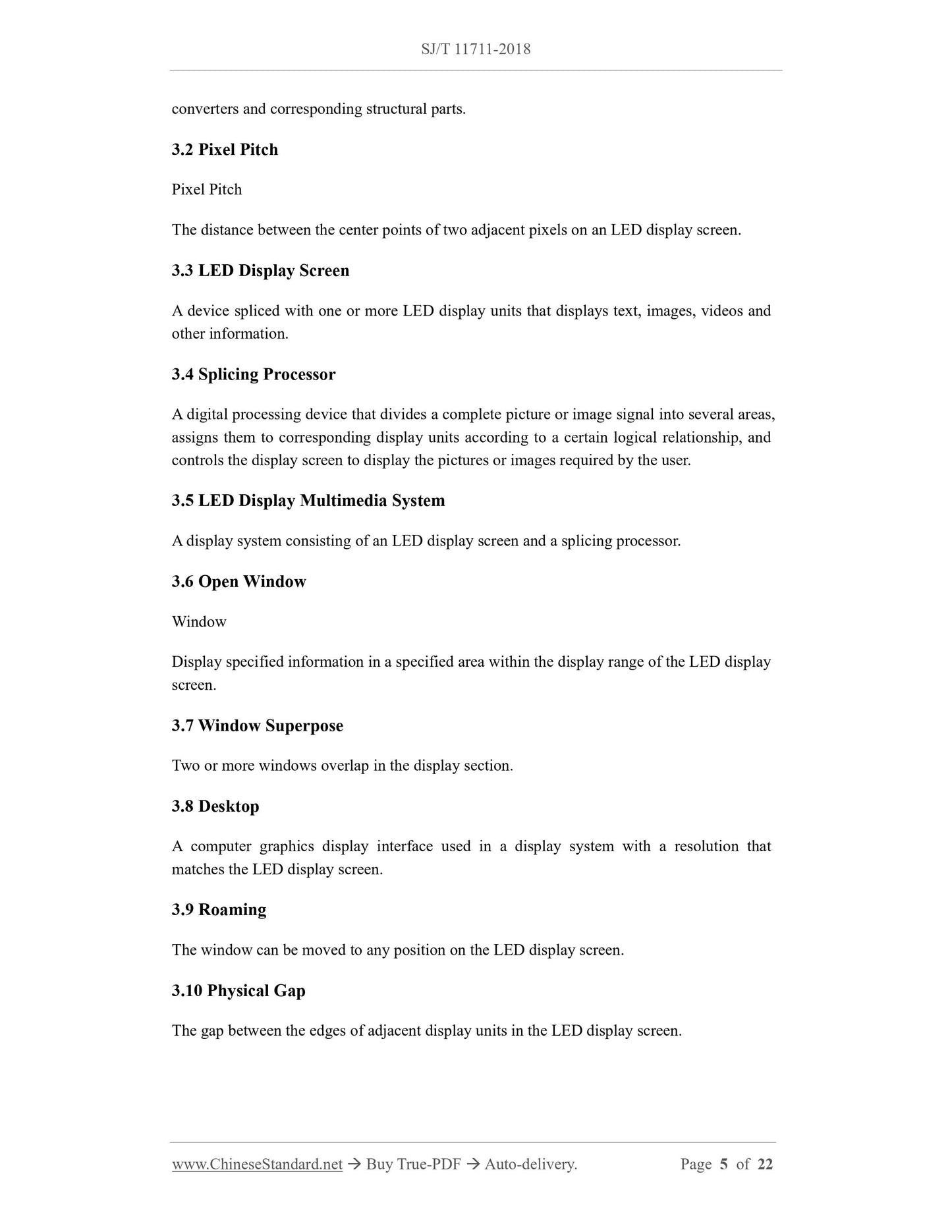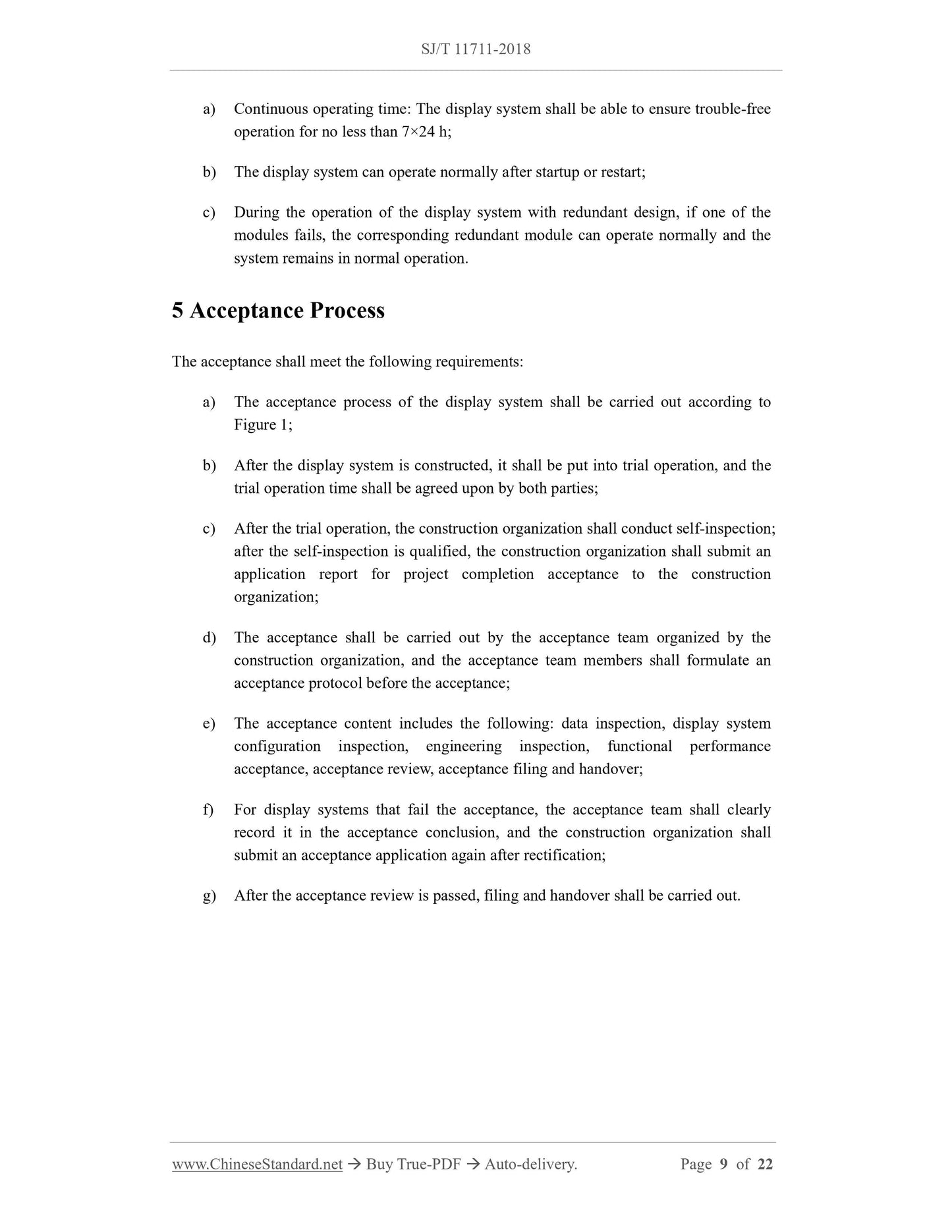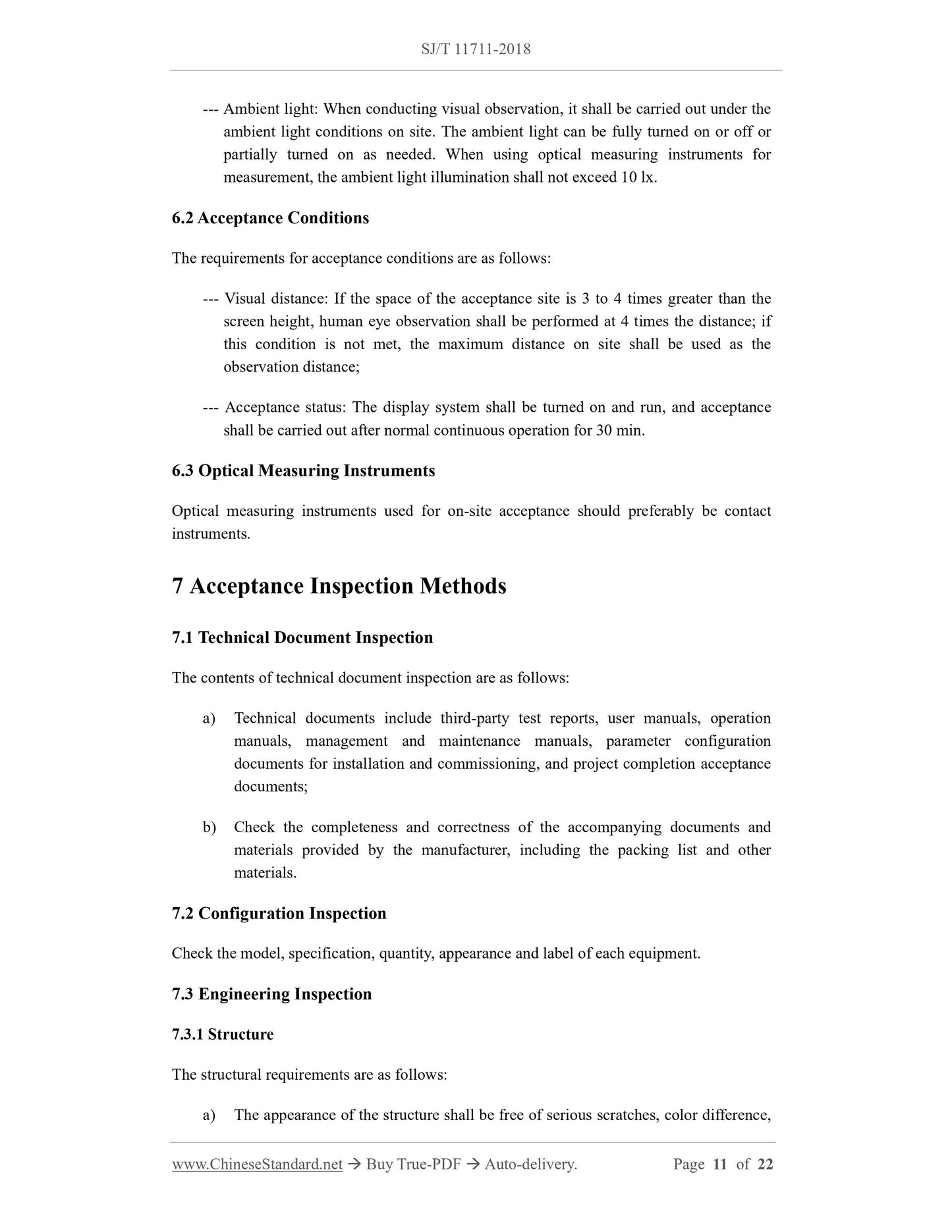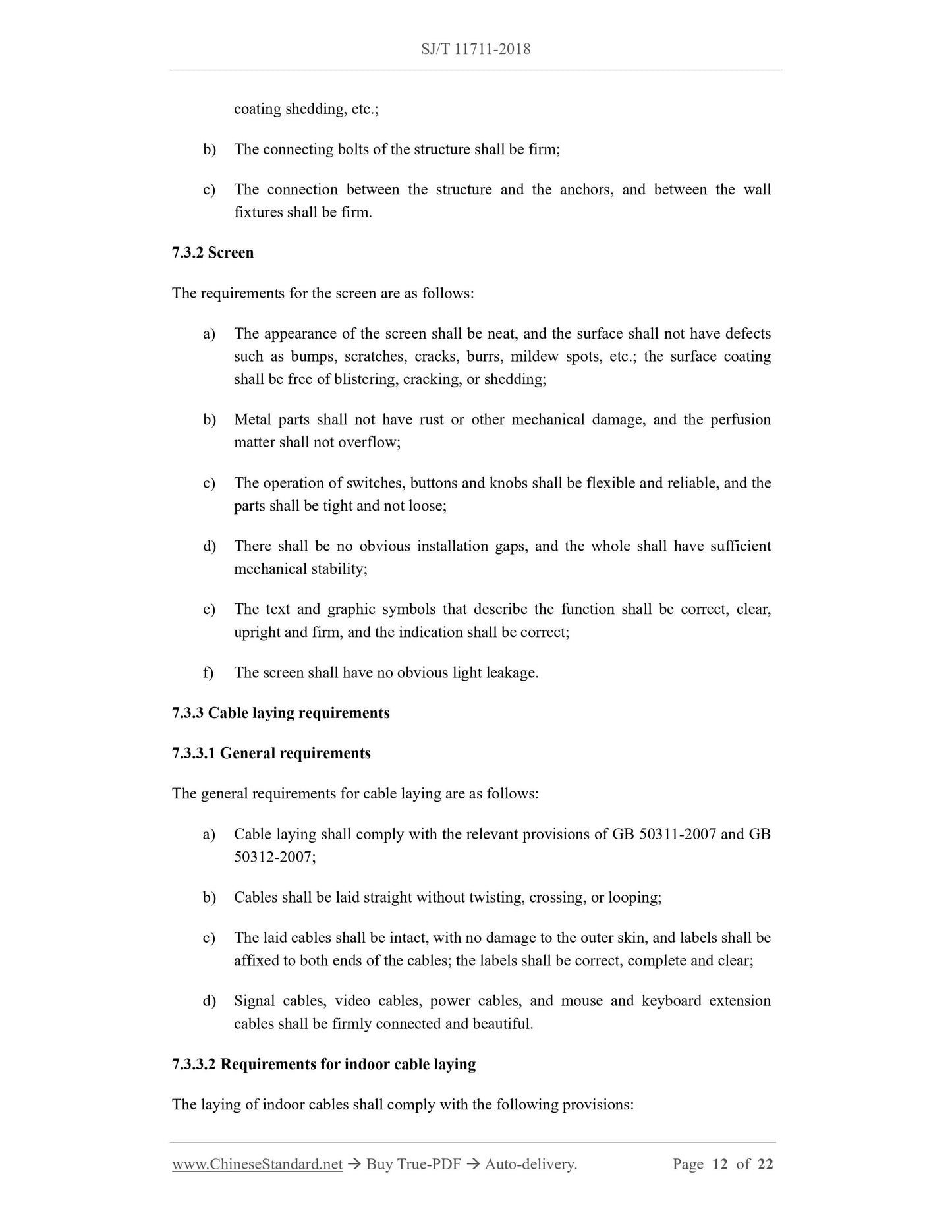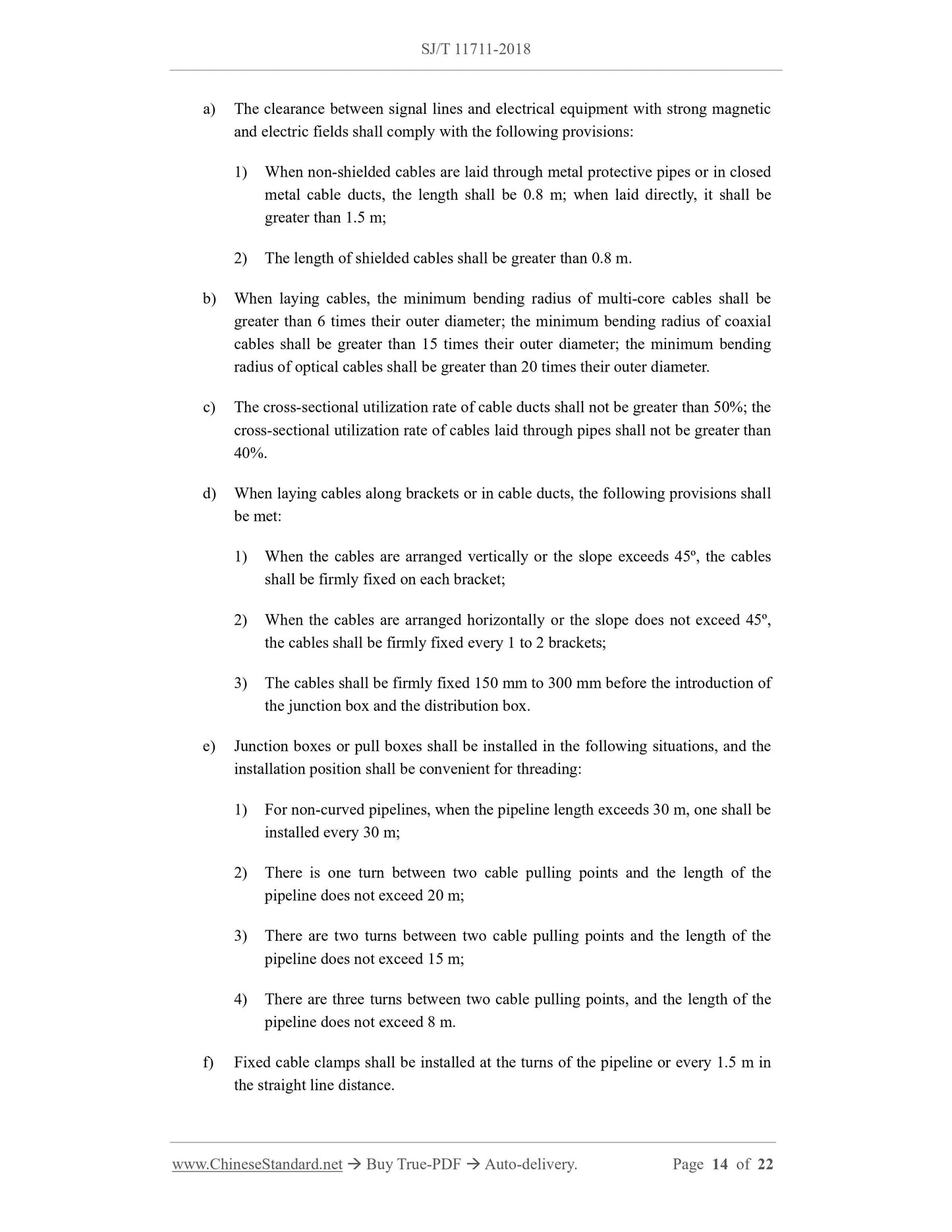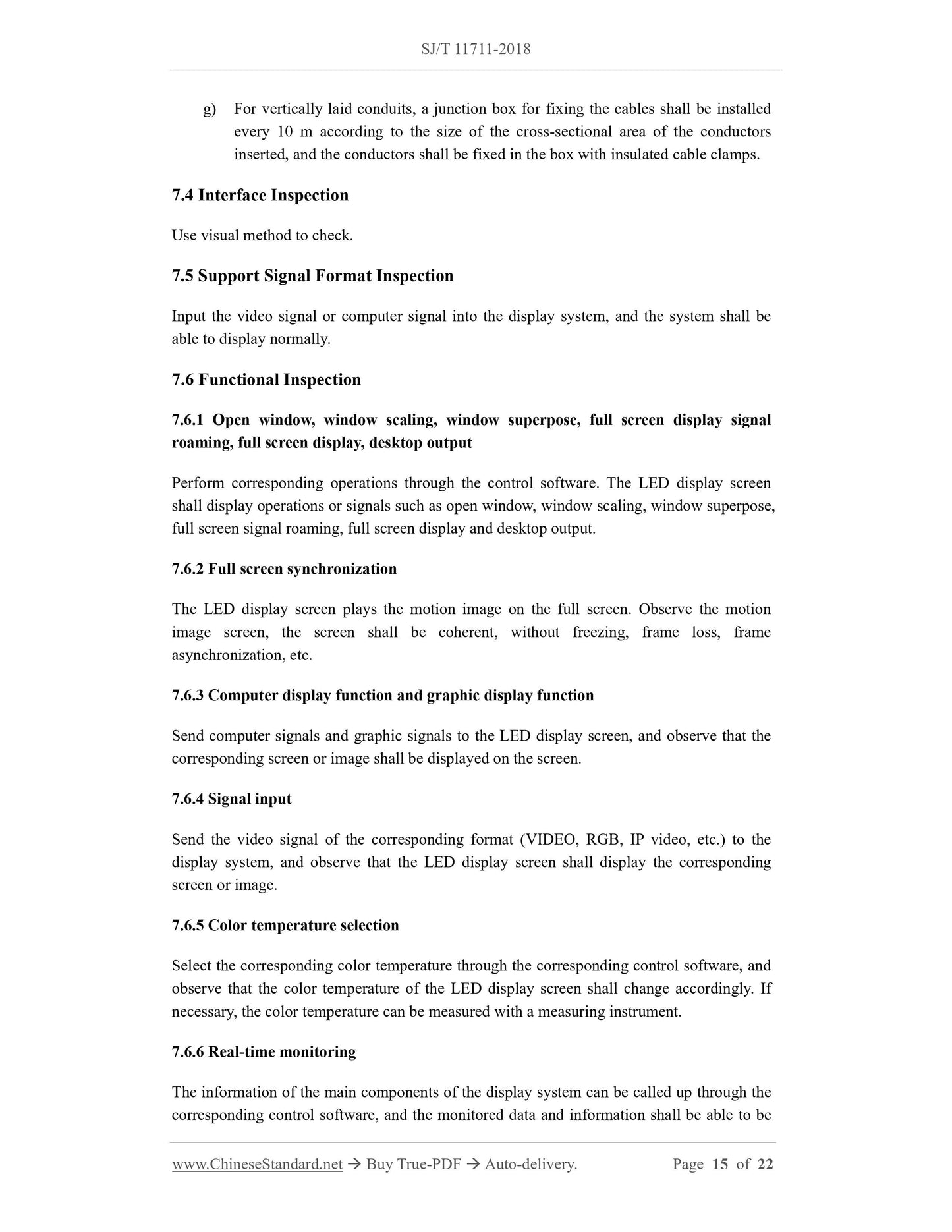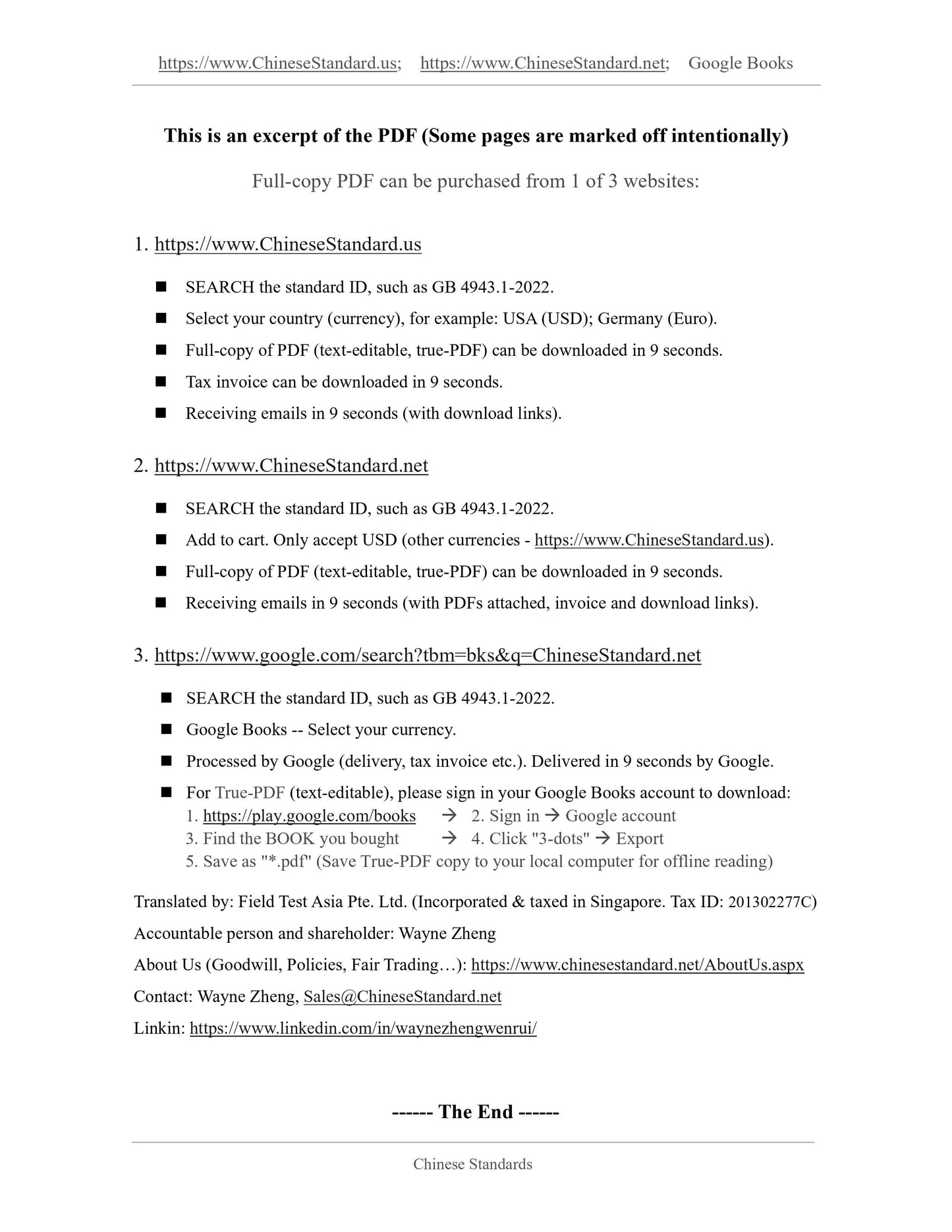1
/
of
10
www.ChineseStandard.us -- Field Test Asia Pte. Ltd.
SJ/T 11711-2018 English PDF (SJ/T11711-2018)
SJ/T 11711-2018 English PDF (SJ/T11711-2018)
Regular price
$290.00
Regular price
Sale price
$290.00
Unit price
/
per
Shipping calculated at checkout.
Couldn't load pickup availability
SJ/T 11711-2018: Acceptance specification for indoor LED display screen multimedia system
Delivery: 9 seconds. Download (and Email) true-PDF + Invoice.Get Quotation: Click SJ/T 11711-2018 (Self-service in 1-minute)
Newer / historical versions: SJ/T 11711-2018
Preview True-PDF
Scope
This Standard specifies the requirements, acceptance process, acceptance inspectionconditions, acceptance inspection methods and acceptance rules for indoor light-emitting
diode (LED) display screens (hereinafter referred to as “LED display screens”) and LED
display multimedia systems (hereinafter referred to as “display systems”).
This Standard is applicable to the design, procurement, construction and acceptance of LED
display screens and display systems.
Basic Data
| Standard ID | SJ/T 11711-2018 (SJ/T11711-2018) |
| Description (Translated English) | Acceptance specification for indoor LED display screen multimedia system |
| Sector / Industry | Electronics Industry Standard (Recommended) |
| Classification of Chinese Standard | M74 |
| Word Count Estimation | 17,156 |
| Date of Issue | 2018-04-30 |
| Date of Implementation | 2018-07-01 |
| Regulation (derived from) | Ministry of Industry and Information Technology Announcement No. 23 of 2018 |
| Issuing agency(ies) | Ministry of Industry and Information Technology |
| Summary | This standard specifies the terms and definitions, requirements, acceptance procedures, acceptance inspection conditions, acceptance inspection methods and acceptance rules for indoor light-emitting diode (LED) displays and LED display multimedia systems. |
Share
